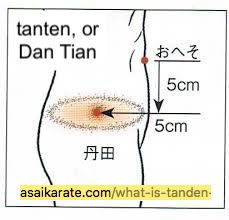In Alexander Yanai Lesson 351 Dr. Feldenkrais refers quite extensively to the “Tandien”, and also in lesson 359. He also obliquely mentions it at the end of AY 352.
In the transcript of AY 351, Dr. Feldenkrais refers to the “tanden” as a Japanese word.
What is this? see also: the Wikipedia article on “Hara” https://en.wikipedia.org/wiki/Hara_(tanden)
An important question is, “How was Moshe instructed in this concept?” An article from the Aikido tradition may be a little closer to how Moshe was instructed (see: https://www.stenudd.com/aikido/tanden.htm).

The Chinese version is “Dantian” and is referenced a great deal in Tai Chi and all things “Chi” and “Ki”.
It is intriguing to wonder about the development of the thinking of Dr Feldenkrais. His perspective was appreciated in the Judo world.
Some years ago I (Rob Black) did a search on Judo discussion forums and found this:
From: r_suave@juno.com (Jeff Churchill) Date: Tue, 14 Apr 1998 21:22:04 EDT Subject: eskrima: Re: Feldenkrais
Yes, Feldenkrais is in my opinion the absolute authority on body mechanics and just about anything physiological. Do you know about his experiences in martial arts? ie Doron Navon?>
It is always nice to meet someone that agrees with me on Feldenkrais as he is known to very few and will ultimately be proven to be one of the most influential martial artists of the century. The reason for my believing this is that he was able to quantify and precisely explain in terms of pure kinesiology, every aspect of Judo, Ju-jitsu, and Aikido and Chi or Ki as they existed through the 70’s.
He began his studies of Ju-jitsu in the 1920’s when he was a member of the Jewish Haganah, a secret organization aimed at protecting them from the Arabs in that era. Under British law in Palestine Arabs could carry swords and Jews couldn’t, with the expected results. Feldenkrais wrote his first Ju-Jitsu text in 1921 and fled to France during its publication to avoid arrest by the English authorities in Palestine. The text was written specifically for members of the Haganah in order to help them deal with blade attacks.
The book so impressed Jigoro Kano, the founder of Judo , that he pursued Feldenkrais for his information, and sent him a high ranking private Judo instructor for several years so Feldenkrais could establish Judo in France. He later founded the Judo club of France, the first in that country. Kano relied heavily on Feldenkrais for his technical analysis of Judo and even incorporated some of Feldenkrais’ blade disarms into Judo.
To put his knowledge in perspective: In the mid fifties, Koizumi, a sixth Dan Judo man trained directly by Kano, and Chairman of the European Judo Union, got 500 black belts together for an international congress of Judo. And when it came time to teach about saika-tanden (or chi) he had Feldenkrais teach the day’s material.
Very interesting!
Disclaimer: The information included on this site is for educational purposes only. Nothing on Feldy Notebook should be construed as an attempt to offer medical advice or treatment.
All contributions to this website are licensed under the Creative Commons Attribution Share-Alike 3.0 License. Do not add any copyrighted information to this website. Feldy Notebook is sponsored by Kinetic Inquiry.